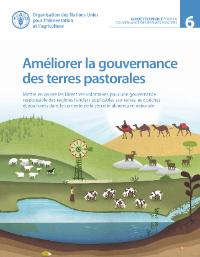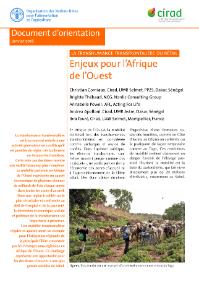Améliorer la gouvernance des terres pastorales
Les Directives volontaires pour une gouvernance responsable des régimes fonciers applicables aux terres, aux pêches et aux forêts dans le contexte de la sécurité alimentaire nationale mentionnent de manière explicite les éleveurs nomades comme utilisateurs des Directives et comme cibles du renforcement des capacités. En dépit de la marginalisation historique des éleveurs nomades, souvent encore d’actualité aujourd’hui, ce guide technique a été élaboré en réponse aux possibilités qui sont en train d’émerger pour appuyer les pasteurs et renforcer leurs droits aux terres et aux ressources.







